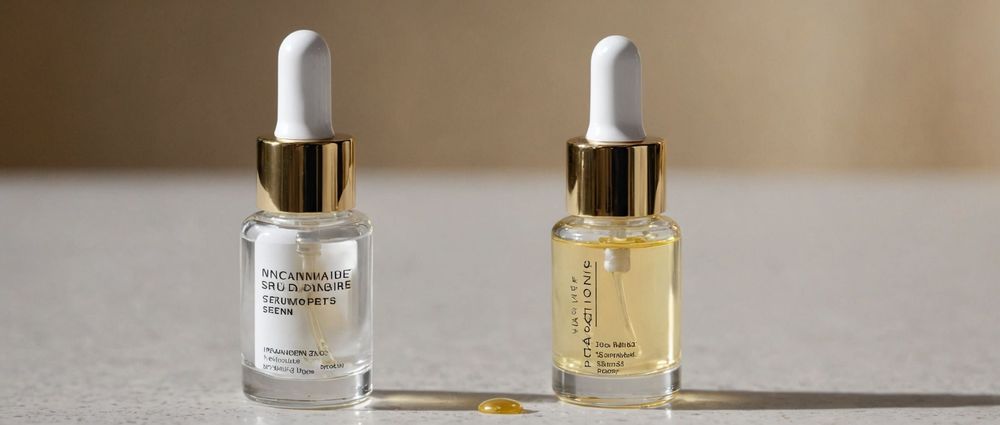Niacinamide, also known as vitamin B3, is a powerhouse ingredient that can transform your skincare routine. It plays a multifunctional role in promoting skin health, addressing various concerns such as acne, hyperpigmentation, and signs of aging. By incorporating niacinamide into your daily regimen, you can achieve a clearer, more radiant complexion while also reinforcing the skin’s barrier. This article will delve deeper into the benefits of niacinamide, how to use it effectively, and tips for incorporating it into your skincare routine.
The Benefits of Niacinamide for Skin Health

Niacinamide is celebrated for its diverse range of skin benefits. Here are some key benefits that make it a must-have in your skincare lineup:
- Improves Skin Tone and Texture: One of the most notable advantages of niacinamide is its ability to even out skin tone and improve texture. It helps reduce the appearance of enlarged pores and fine lines, leaving the skin looking smoother.
- Reduces Inflammation: Niacinamide is known for its anti-inflammatory properties, which makes it beneficial for those suffering from acne and rosacea. It can calm redness and irritation, promoting a healthier appearance.
- Enhances Skin Barrier Function: This ingredient strengthens the skin’s barrier, making it more resilient to environmental stressors. A stronger barrier helps retain moisture and prevent dehydration.
- Balances Oil Production: Niacinamide can regulate sebum production, making it ideal for oily and combination skin types. A balanced oil level can help keep breakouts at bay.
- Boosts Radiance: Regular use of niacinamide can lead to a more illuminated and youthful complexion due to its ability to promote skin elasticity and vitality.
How to Incorporate Niacinamide into Your Skincare Routine

Adding niacinamide to your skincare routine is straightforward, but knowing how to do it effectively is essential for achieving the best results. Here’s how to seamlessly integrate it:
1. Choose the Right Product: Niacinamide is available in various formulations, such as serums, moisturizers, and toners. Opt for a product with a concentration between 5% to 10% niacinamide for optimal results.
2. Layering is Key: If using multiple products, apply niacinamide on clean skin after your toner but before heavier creams. This layering method allows for better absorption.
3. Pairs Well With Other Ingredients: Niacinamide works harmoniously with other skincare ingredients like hyaluronic acid, peptide serums, and even vitamin C. However, be cautious when combining with certain acids, as they may reduce its effectiveness.
4. Patch Test First: Always perform a patch test when trying a new product, especially if you have sensitive skin. Apply a small amount on your wrist or under your jawline to see if any irritation occurs.
5. Consistency is Crucial: Incorporate niacinamide into your daily routine for the best results. The skin benefits will accumulate over time, offering visible long-term improvements.
Potential Side Effects and How to Avoid Them
While niacinamide is generally safe for most skin types, some individuals may experience occasional irritation. Here are potential side effects and tips to avoid them:
1. Irritation or Redness: Begin with a lower concentration and increase gradually as your skin acclimates to prevent irritation.
2. Purging: Some users may notice an initial flare-up of breakouts, commonly referred to as purging. This is typical and generally subsides in a few weeks.
3. Allergic Reactions: Although rare, an allergy can occur. Watch for signs such as extreme irritation or swelling and discontinue use if they arise.
4. Use Sunscreen: Niacinamide itself does not increase sun sensitivity, but it’s essential to wear sunscreen daily, as all active ingredients should ideally be protected against UV damage.
5. Consult a Dermatologist: If you have persistent reactions or are unsure about pairing with other ingredients, consulting a dermatologist will provide tailored advice based on your skin type.
Conclusion
Incorporating niacinamide into your skincare routine is an effective way to address a multitude of skin concerns while enhancing overall skin health. Its ability to improve tone, texture, and hydration, along with its protective properties, makes it a valuable addition to anyone’s regimen. With consistent use and careful consideration of product layering, you’ll likely experience the numerous benefits of this dynamic ingredient. Take the time to explore different products, and don’t hesitate to consult professionals when in doubt. Transform your skin and enjoy a radiant glow through the power of niacinamide.
FAQs
1. Can I use niacinamide with vitamin C?
Yes, niacinamide can be used with vitamin C, although some individuals prefer to layer them in a way that avoids direct contact initially. Allow one to absorb before applying the other for best results.
2. How often should I use niacinamide?
For most people, using niacinamide once or twice daily is effective. Consistency is key, so find a routine that works for you.
3. Is niacinamide suitable for sensitive skin?
Yes, niacinamide is generally suitable for sensitive skin due to its calming properties. Start with a lower concentration to see how your skin reacts before increasing.
4. Can niacinamide help with enlarged pores?
Yes, niacinamide can help minimize the appearance of enlarged pores by regulating oil production and improving skin texture over time.
5. How soon can I expect to see results from niacinamide?
Many users start to notice improvements in skin texture and tone within a few weeks, but optimal results may take a few months of consistent use.
